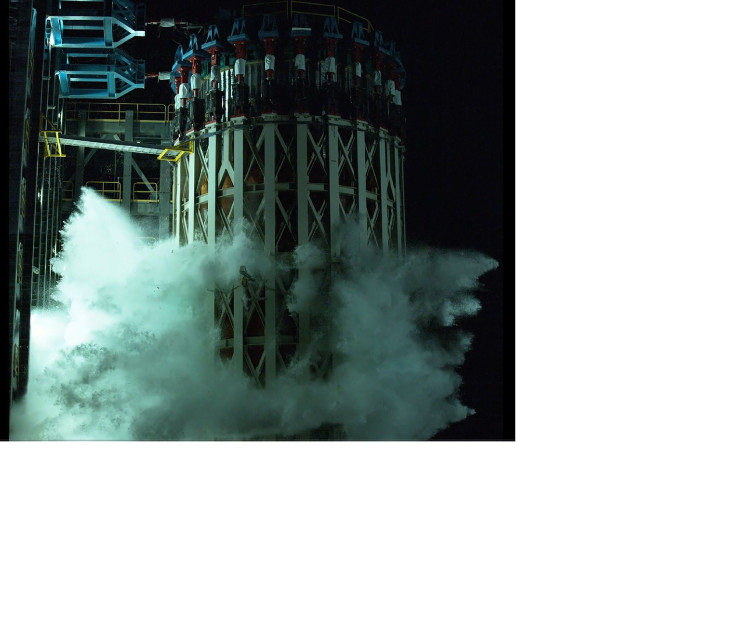Video Shows NASA’s Rocket Tank Exploding During Test [WATCH]
KEY POINTS
- NASA shared a video of the SLS rocket's tank exploding
- The video shows the structural test of the SLS tank
- The test simulated the conditions of an actual launch
A video recently released by NASA shows the exact moment when the tank of the Space Launch System (SLS) rocket exploded. It was taken during a test event aimed at determining the structural limits of the rocket component.
The test was carried out by NASA on June 24 at its Marshall Space Flight Center in Huntsville, Alabama. It focused on the structural capabilities of the tank that will be used on the SLS, which will serve as the main launch vehicle for NASA’s upcoming space missions under the Artemis spaceflight program.
The tank, which measures about 70 feet tall and 28 feet wide, was secured to a special test stand at the Marshall Space Flight Center. It was then filled with water to simulate liquid oxygen. In an actual launch, the tank will be part of the SLS core stage that’s designed to produce about 2 million pounds of thrust in order to propel the rocket.
During the recent test, NASA used hydraulic cylinders to apply millions of pounds of crippling force on the sides of the tank. The objective of this event is to simulate the harsh launch conditions that the tank will be subjected to during an actual spaceflight.
In the short clip shared by NASA, explosions on different sides of the tank can be seen. As the various sides of the tank rupture, water bursts out from the rocket component.
The event serves as a special occasion for NASA since it serves as the last test of the SLS structural qualification testing, which focused on the rocket’s core stage. Overall, the agency carried out 200 tests to ensure that the SLS’ components could endure the harsh conditions of spacelight.
“The Marshall test lab team has worked closely with the Space Launch System Program to test the rocket’s structures from the top to bottom,” Ralph Carruth, the director of the Marshall Space Flight Center’s test lab, said in a statement.
“After watching the test stands being built, working alongside SLS and Boeing engineers to establish testing procedures and conducting and gathering results of five structural qualifying tests, we are proud to contribute data shows these structures can withstand the rigors of flight,” he added.

© Copyright IBTimes 2024. All rights reserved.





















